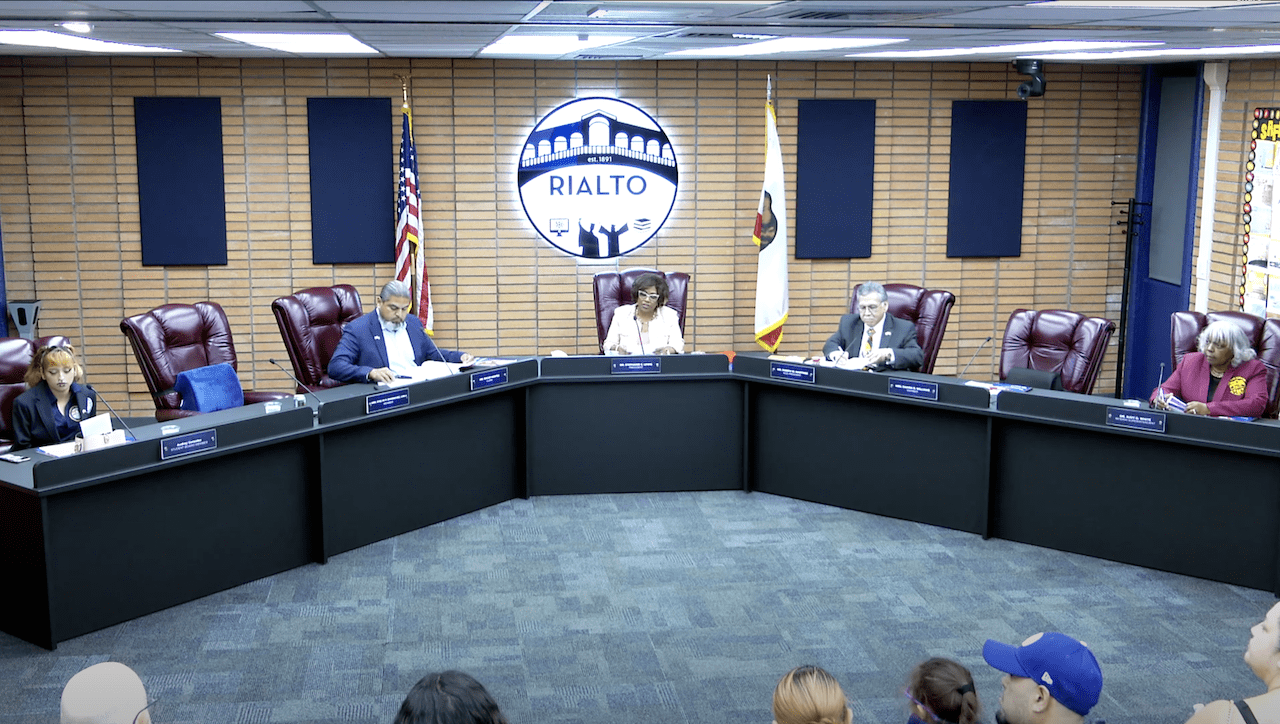Fontana, CA — A surge of public outcry over recent immigration enforcement activity collided with infrastructure updates at the Fontana City Council meeting on July 8, where residents demanded sanctuary city protections while transportation officials touted decades of progress funded by local taxes.
The meeting included a presentation by Otis Greer, director of Legislative and Public Affairs for the San Bernardino County Transportation Authority (SBCTA), who briefed the council on Measure I, the county’s half-cent sales tax that funds transportation projects.
Greer highlighted Measure I’s significant impact, noting that since its renewal in 2010, it has leveraged nearly $3 billion in transportation investments countywide, including upgrades to Sierra, Foothill, Cherry, and Citrus avenues in Fontana.
Mayor Acquanetta Warren, who serves on the SBCTA board, praised the self-help tax as a regional success story.
“This allows us to determine what projects will actually be funded,” Warren said. “We do work closely with Caltrans, but the funding comes from us, and that allows us to prioritize what we need most.”
But the tone of the meeting shifted during public comment when multiple residents expressed outrage over recent U.S. Immigration and Customs Enforcement (ICE) activity in Fontana.
Speakers described masked agents detaining residents in unmarked vans, often without warrants, sparking fear across immigrant neighborhoods.
Jonathan Garcia, a Fontana native and recent Stanford University graduate, urged the city to formally declare itself a sanctuary city.
“If we are truly not collaborating with ICE, why not declare that formally?” Garcia asked. “Businesses are running bare in fear. Students are scared to go to school. The very fabric of our community is being torn apart.”
Multiple speakers, including teachers, social workers and longtime residents, accused the city of remaining silent as ICE and bounty hunters allegedly carried out detentions.
Educators recounted the trauma their students experienced, while others cited reports of abductions occurring near schools and public areas in June and early July.
“I’m shocked, saddened and angered by the reports of our community members being hunted down like animals,” said Andrew Chandra, a resident since 1984. “We are fortunate to have a competent police force. ICE has no legitimate reason to be here.”
Several called on the city to provide legal aid, publish “Know Your Rights” resources and pass an ordinance requiring ICE agents to identify themselves.
Some pointed to examples from cities like Huntington Park and Los Angeles that have adopted formal noncooperation policies.
While no council member directly addressed the sanctuary city requests during the meeting, Councilmember Jesse Sandoval acknowledged the concerns and criticized the use of masks by ICE agents.
“If I get threats, should I wear a mask? These agents chose their jobs,” Sandoval said. “I don’t understand why they have to wear masks, especially in our neighborhoods. It endangers trust.”
Sandoval added that while he sympathized with residents, there are legal limitations on what the city and its police department can do.
“Yeah, I’m a council person but not everybody knows I’m a council person,” he said. “And I fit the criteria. They can pull me over and take me away, too. I don’t know anything we can do about it.”
Fireworks enforcement and noise complaints prompted discussions about possible ordinance changes, though officials said current rules already prohibit fireworks after 11 p.m.
Other council members focused on recent events and city updates. The council unanimously adopted a state-mandated fire hazard severity zone map and adjourned the meeting in memory of flood victims in Texas.
The meeting ended without formal action on the immigration concerns raised, but the volume and urgency of the comments signaled a growing tension between city leadership and segments of its heavily immigrant population.





